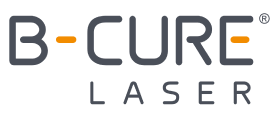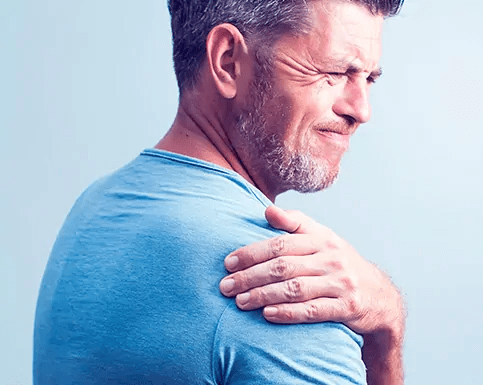Lower back pain is one of the main causes of discomfort experienced by adults in the UK, with 1 in 6 people experiencing some form of restriction to enjoying their daily routine.
Pain in the lower back is the most common form of work-related disability and the main reason for absence from work.
Musculoskeletal conditions such as back pain cost the NHS nearly £5billion each year, with increased home working, poor posture and sedentary lifestyles all contributing to the growing impact on people’s back health according to a study researchers at Manchester Metropolitan University.
What are the most common causes of lower back pain?
- Nerve injuries
- Muscle injury
- Injury to ligaments and tendons
- Injury to spinal vertebrae
How lower back injuries are caused
- General wear and tear
- Work that requires long periods of sitting
- Lifting or carrying heavy objects while bending at the hip instead of at the knee
- Lack of physical activity
- Fast and strenuous sports, such as running, biking, tennis, basketball and soccer, which may put strain on the skeletal-muscular system, mainly on the spinal vertebrae and discs, thus causing harm.
- The sciatic nerve – pressure on the sciatic nerve is one of the most common causes of back pain.
- Spinal stenosis – this condition usually develops as a result of accumulated degeneration in the vertebrae structure, placing pressure on the nerves and causing pain.
- Herniated or protruding disc – the spinal discs are separated by a cushioned, flexible, gelatinous disc situated between each of the vertebrae. When the outer layer of this disc ruptures and the liquid inside leaks out through the surrounding fibres, this may cause direct pressure on the root of the nerve inside the spinal canal.
- Non-specific back pains – most back pains are diagnosed as non-specific. In other words, pain that does not have a clear cause.
Treatment of Lower Back Pain
- Physical or chiropractic therapy
- Drug therapy – pain relievers, anti-inflammatory pills, opioids – these achieve an easing of pain by suppressing the central nervous system and are a high risk of addiction and to developing resistance to the pill’s effect. There are also drugs from the benzodiazepine class – psychoactive pills with calming (sedative), muscle relaxing effects
- Treatments from the branch of alternative medicine – massage, Shiatzu, Tuina, acupuncture, hydrotherapy, osteopathy, etc.
- Low level laser treatment may be used to treat lower back pains. The B-Cure Laser device has been proven to provide high efficacy in treating such medical conditions.
What are the benefits of B-Cure Laser for treating lower back pain?
B-Cure Laser provides breakthrough laser therapy, offering the power of some professional lasers as used in clinics, in a lightweight portable device that may be used from the comfort of you’re home.
The treatment is safe, effective and may provide lasting pain relief.
B-Cure Laser’s restorative power is provided by advanced laser technology.
B-Cure Laser should be placed in contact with the skin allowing the photon energy to penetrate the tissues and stimulate the body to produce adenosine triphosphate (also known as ATP), which carries energy within the cells. The ATP interacts with biomolecules inside the cells to promote normal cell function, which in turn aids the body’s natural healing processes.
Patients recover from muscular, skeletal, and nerve injuries as cells regenerate faster and function better.
Research has proved that using the B-Cure Laser for painful knee conditions provides cells with more energy to perform their functions.
Therapeutic effects of LLLT (laser phototherapy)
B-Cure Laser utilises advanced laser technology to stimulate Adenosine Triphosphate (ATP) production within cells, promoting natural healing processes. Research indicates increased cellular metabolism, collagen and enzyme production, improved circulation and reduced inflammation. With a wide beam covering 4.5 cm, B-Cure Laser treats various painful conditions rapidly and non-invasively.
- Increased production of ATP
- Increased cellular metabolism
- Increased collagen production
- Increased enzyme production
- Increased protein synthesis
- Improved blood circulation
- Improved lymphatic flow and drainage
- Reduced inflammation
All this serves to boost the body’s natural healing power, targeting the root causes of pain and providing rapid relief.
B-Cure Laser is unique due to it’s beam that covers a surface of 4.5 cm, making it possible to treat a wide range of painful conditions easily, effectively and quickly.
B-Cure Laser is safe for all ages, and does not require protective eyewear during use.
What are the benefits of B-Cure Laser?
- May reduce chronic pain
- Non-invasive and non-surgical treatment
- Suitable for all ages
- No known side effects
- Clinically proven by many studies
- Easy and safe for home use
Treatment Protocol
Place the device on the painful vertebrae along the spine for a duration of 8 minutes.
For treatment of the sciatic nerve, as a result of a bulging or herniated disc, place the device on vertebrae L4 and L5, even if you do not feel any pain at these points. Usually, these vertebrae constitute the source of the problem. Treat each point for a duration of 8 minutes.
In the event that pain radiates to the buttocks or legs, locate the point of pain on the sciatic nerve by touching and treating the back of the knee.
To make treatment more convenient, the adjustable stand can be used to stabilise the device. As a result, you can deliver relief without the need to move and allow the laser beam to penetrate deep into the affected tissues.
In order to reach optimal results, repeat the treatment at least twice a day.




